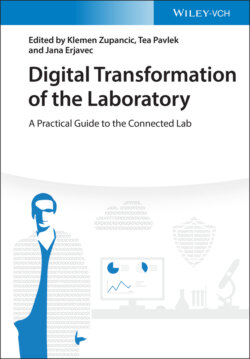Читать книгу Digital Transformation of the Laboratory - Группа авторов - Страница 17
1.2.4 Data Management and the “Real Asset”
ОглавлениеIt is true of 2020, just as it was 50 years ago and will be in 50 years time, that the primary output of R&D, in whatever industry, is data. The only physical items of any value are perhaps some small amounts of a few samples (and sometimes not even that) plus, historically, a lot of paper! It is therefore not surprising that the meme “data is the new oil” [21] has come to such prominence in recent times. While it may be viewed by many as hackneyed, and by many more as fundamentally flawed [22], the idea carries a lot of credence as we move toward a more data‐driven global economy. One of the main flaws arising from the oil analogy is the lack of organizations being able to suitably refine data into the appropriate next piece of the value chain, compared to oil, which has a very clear refining process and value chain. Furthermore, the “Keep it in the Ground” [23, 24] sustainability momentum makes the data‐oil analogy perhaps even less useful. However, within the LotF, and in a more open, collaborative global R&D world, experimental data, both raw and refined, will grow in criticality. Without doubt, data will remain a primary asset arising from the LotF.
At this point then it is worth considering how data and data management fit into the processes that drive the two fundamental lab types, which we have referred to earlier, namely (i) the hypothesis‐driven, more research/discovery‐driven lab and (ii) the protocol‐driven, more “manufacturing”‐like lab.
